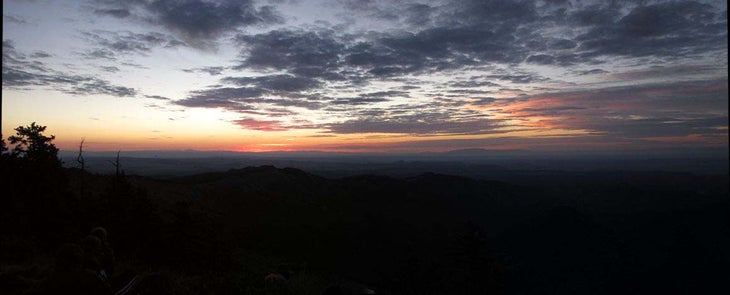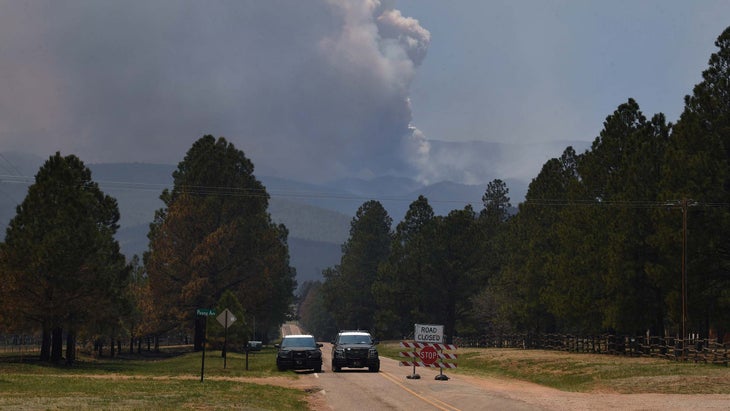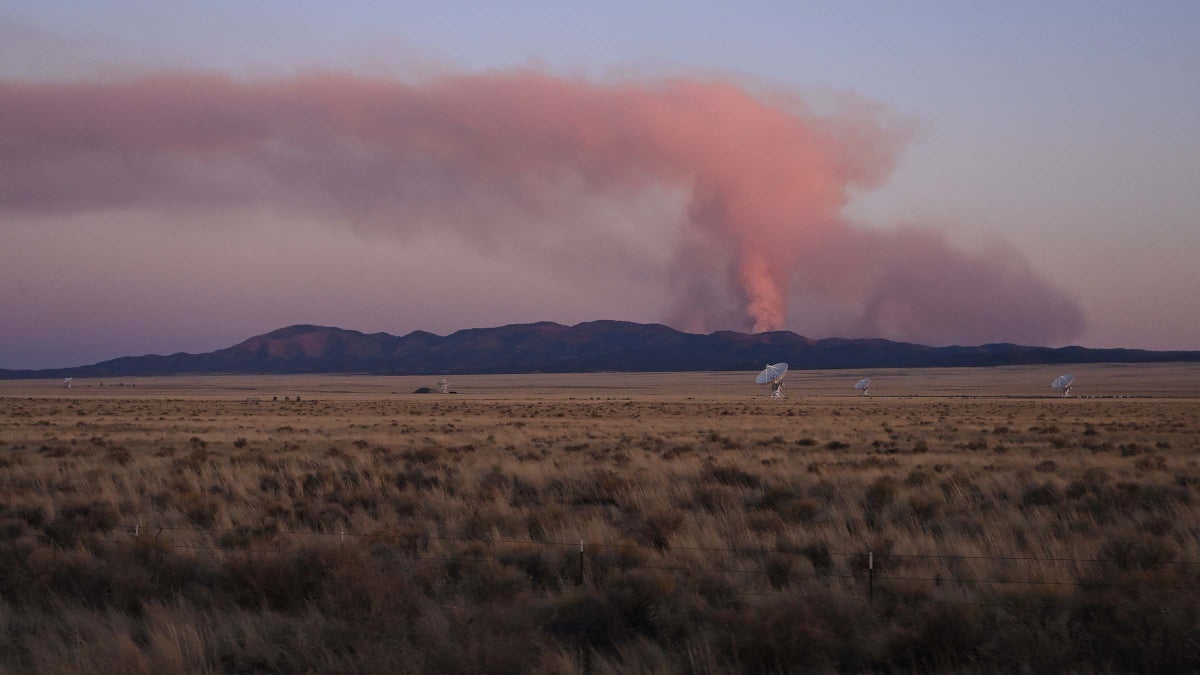Products You May Like
Get full access to Outside Learn, our online education hub featuring in-depth fitness, nutrition, and adventure courses and more than 2,000 instructional videos when you sign up for Outside+
Sign up for Outside+ today.
More than 300 miles of the Continental Divide Trail through New Mexico are closed to hikers after extreme wildfire danger prompted three national forests to close all public access.
This spring, some trails in northern New Mexico are so dry that puffs of dust follow every footfall. Streams typically thick with snowmelt are just trickles of water, and grass is already brown and crisp.
“The conditions here are very, very dry, and it’s historic in that the dry conditions arrived so early and got extreme so fast, so pretty much all of New Mexico is in extreme fire danger right now,” Stefani Spencer, acting public affairs officer for the Carson National Forest, one of the three now closed. “What that means is that the fuels are so dry that any small spark could be catastrophic.”
Abandoned campfires, tossed cigarette butts, or even chains dragging off a trailer could easily spark a fire in wildland which fire officials are describing as drier than lumber found in a hardware store. Fire season started about a month earlier than usual and has already seen the largest wildfire in state history, the Calf Canyon/Hermits Peak Fire, which has burned more than 311,000 acres and is just one of half a dozen ongoing fires in the state. To prevent any more human-caused wildfires, as of 8 a.m. Thursday, May 19, forest managers banned the public from three of the five national forests in New Mexico, Santa Fe, Cibola, and Carson National Forests. The move leaves hundreds of thru-hikers scrambling for an alternate plan for piecing together the trail, and stoking worries that climate change may make these thru-hikes all but impossible.
The CDT starts in southern New Mexico’s Chihuahuan Desert, traversing mesquite scrublands with prickly pear and cholla cactus, where craggy peaks span the horizon lines and water sources are few and far between. In what’s now closed, hikers would climb Mount Taylor, or Tsoodzil, a peak sacred to the Diné, traverse rocky mesas and ascend to a first taste of the alpine in the often boggy plateau of San Pedro Parks Wilderness. From there, they would wend over pink and white canyons with mesas darkened by pinyon and juniper trees, then spend four days walking uphill to cross into Colorado among the aspen groves on Cumbres Pass.

“What they’re going to miss, in general, is just some really gorgeous sunsets and sunrises that remind you why we’re out in the woods, and those little morsels that keep you grounded when we go back to normal life,” said Teresa Ana Martinez, executive director and co-founder of the Continental Divide Trail Coalition. “People have spent their whole lives planning this, so it’s hard to be OK — but this is the experience of the Continental Divide Trail. … One of the most important lessons you can learn about being on the CDT is that you are not in control. Mother Nature does not care about your itinerary.”
The closures affect about one-third of New Mexico, including about a quarter of the total CDT mileage. The Forest Service started letting the Continental Divide Trail Coalition know almost a week before officially announcing the closures. The CDTC estimates some 300 to 400 thru-hikers are currently on the trail.
This isn’t the first time that drought and fires have closed New Mexico’s national forests. In 2018, another hot dry wildfire season prompted several to shut their gates. But that was weeks later than this year, when more snow had melted out of the high-altitude miles through southern Colorado’s San Juan Mountains, which let hikers safely skip ahead.
“If this was in June, like normal, folks could just go right into the San Juans, but the problem is, it’s really early to be in the San Juans right now,” Martinez said. “Really, there’s nowhere to go.”
Because it’s a full forest closure, instead of a wildfire to steer around, the coalition is not offering a reroute, and discourages lengthy road walks as dangerous. Instead, coalition staff have been sharing details about how to link together buses and trains to dodge the missing miles. They’re also letting gateway communities know to expect some stranded hikers. The best solution, for now, Martinez said, might be two weeks of zero days, resting up and eating well before the punishing miles ahead in Colorado.
“The northern parts of New Mexico would have been, to date, some of the most beautiful and mountainous miles that people would have had—people have been looking forward to this high country,” said Thomas Gathman, the Triple-Crowner who calls himself the Real Hiking Viking. He had just reached Grants, New Mexico, when the closure order was issued five trail miles ahead.

“Those miles in northern New Mexico start breaking you into the reality of the high country in Colorado, he said. “It eases you into all of that, and instead, people are going from the desert—legitimate desert—all the way up to 10,000 feet.”
His plan for the year had been to walk the CDT north to the Canadian border, then bike back south. Instead, he’s heading home to Denver, fetching his bike, going back to the Mexican border, riding north, then planning on hiking south.
Even that plan, he knows, might have to shift again.
“I really don’t give a shit about my hike compared to what the real-world circumstances are about all these fires, what they mean for the people, for the places, for the animals, for the future, for the health of the land,” he said. “I learned a long time ago to not have expectations out west with these big thru-hikes.”
Barricades and closed gates now bar many entry points, and signs hang at all major trailheads. Sometimes, Forest Service personnel sweep trails to check for hikers, Martinez said.“If folks are thinking, ‘No one is ever going to be out there,’ they might be, and the fine is pretty steep.” Entering the forest now is a misdemeanor punishable by a fine of up to $5,000 or six months in jail.
Extremely fire-prone conditions are expected to worsen over coming weeks but at least for now, closures are scheduled to end July 18. The summer monsoon typically brings routine rainstorms to New Mexico by mid-June.
“It sounds like the rain is going to come, it’s just a matter of when,” said Spencer, with the Carson National Forest, “and that is really what it’s going to take to make it so we can let people back out in the forest.”
Martinez has been urging stressed hikers to stay calm. Perhaps, someday it’ll even be a badge of honor to have been in the class of hikers from the year the whole forest closed.
But, she added, these may be warning signs of what’s to come for all thru-hikers.
“For these big, western trails, a continuous thru-hike might be not just luck of the draw, but increasingly challenging because of the state of the planet,” Martinez said. “We’re all like, ‘Is this new normal?’”
